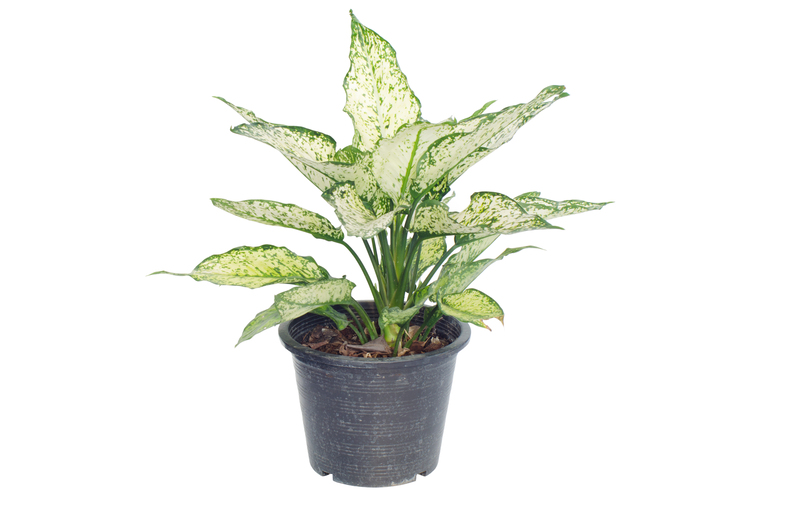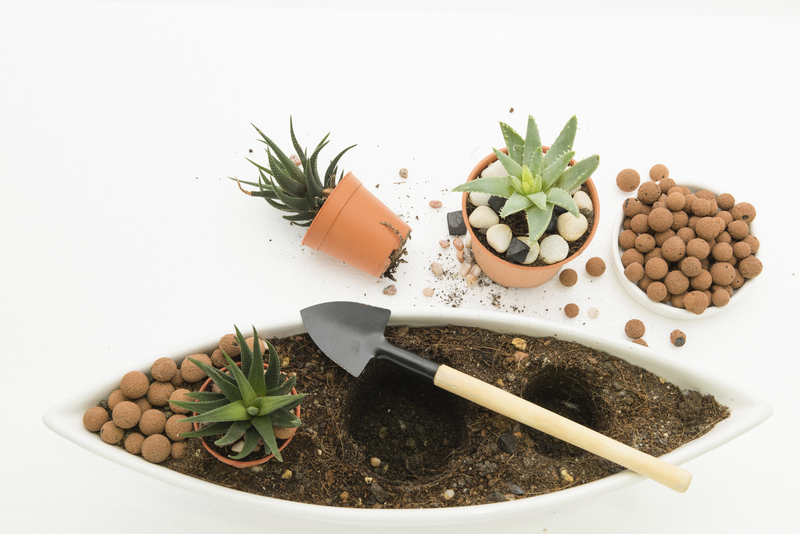Cultivated Beauty: Essential Hedge Trimming Shapes and Techniques
Posted on 05/06/2025
Cultivated Beauty: Essential Hedge Trimming Shapes and Techniques
Embracing the cultivated beauty of your landscape starts with well-maintained hedges. The art and science of hedge trimming not only bring definition and structure to your outdoor space but also promote plant health and lush growth. Whether you are a gardening enthusiast or a homeowner seeking to elevate your curb appeal, understanding the essential hedge trimming shapes and techniques can transform your garden into a living masterpiece.
Why Well-Shaped Hedges Matter
Hedges play an integral role in landscape design. They form boundaries, offer privacy, act as windbreaks, and most importantly, contribute to the visual harmony of outdoor areas. Skillfully trimmed hedges accentuate paths, protect property lines, and create focal points throughout your garden. Proper shaping not only enhances their aesthetic value but also encourages healthy, robust growth for years to come.
- Improved plant health: Regular trimming removes dead or diseased branches.
- Enhanced aesthetics: Geometric shapes create tidy, formal outlines.
- Functional benefits: Hedges can be shaped for greater privacy or to block wind and noise.
- Sustainable growth: Strategic trimming guides sunlight and air throughout the plant.

Popular Hedge Trimming Shapes for Cultivated Beauty
Choosing the right shape is the backbone of achieving cultivated beauty in any landscape. Each shape brings a distinctive style and function, from bold statements to seamless borders. Below are the most sought-after hedge shapes and their defining characteristics:
1. Formal Geometric Shapes
Formal shapes are the epitome of classic elegance. Using precise lines and angles, these hedge forms impart a sense of order and sophistication to your garden. Common shapes include:
- Rectangular: Ideal for borders and property lines. Achieved with level tops and straight sides for a crisp appearance.
- Square: Similar to rectangular but usually taller for privacy screens.
- Oval/Elliptical: Softens the harshness of straight lines, introducing a gentle flow in the landscape.
- Round: Spherical hedges add playfulness and interest, often used as standalone focal points or in parterre gardens.
Pro Tip: Use string lines or stakes to guide your trimmer and maintain perfectly symmetrical edges!
2. Naturalistic or Informal Shapes
Where formal gardens emphasize symmetry, informal hedge shapes celebrate the plant's inherent growth patterns. These are often organic and flowing, intended to blend with other garden plants and natural landscapes.
- Flowing curves: Follow the hedge's natural form, allowing for undulating borders that soften hardscapes.
- Loose screens: Less frequent trimming maintains privacy without sharp lines, ideal for rustic or woodland gardens.
- Mixed heights: Alternate the hedge's elevation for a whimsical, dynamic effect.
3. Topiary and Decorative Shapes
Perhaps the most striking of all, topiary hedges are living sculptures. Skilled gardeners create animals, spirals, cones, and other imaginative forms, making the hedge itself a centerpiece.
- Cones and pyramids: Offer vertical interest and height.
- Spirals and obelisks: Add drama and movement to the garden design.
- Custom shapes: From geometric orbs to animals, these bespoke designs showcase true mastery.
Essential Hedge Trimming Techniques for Lasting Beauty
Achieving professional results with your hedge requires mastering several key techniques. Proper timing, sharp tools, and systematic cutting are all critical for maintaining both the shape and health of your plants. Below, we outline the essentials of hedge care to help you attain that cultivated look:
1. Choose the Right Tools
The correct tools make all the difference. For most hedge trimming tasks, you'll need:
- Hedge shears: Manual or powered, ideal for precise shaping and detailed work.
- Pruning loppers: For cutting thicker branches that shears can't handle.
- Electric or gas trimmers: Best for longer, taller hedges and reducing labor.
- Hand pruners: Essential for snipping finer tips and maintaining delicate shapes.
Tip: Keep blades sharp to ensure clean cuts that heal quickly, minimizing stress and disease risk to your hedge plants.
2. Timing Your Trims
Trimming season will depend on the species of your hedge. As a rule of thumb:
- Spring and early summer: Best for formative and maintenance trimming. Most shrubs are actively growing, enabling quick recovery.
- Late summer: Lighter trims can refine shape, but avoid cutting during hot, dry spells or just before frost.
- Evergreens: Slightly later in summer for formal pruning, as they grow more slowly.
Never trim during extreme weather or while birds are nesting. Always verify the right schedule for your particular hedge species to avoid damaging new growth.
3. Shaping Techniques: Mastering Precision
No matter the chosen design, careful technique ensures your hedge remains full, healthy, and evenly shaped. Here's how to perfect your approach:
-
Maintain a Tapered Profile:
Trim the sides so they are wider at the base and narrower at the top. This allows sunlight to reach lower branches, promoting dense foliage from the bottom up. Avoid reversing the taper, or your hedge will thin out at the base.
-
Work from the Bottom Up:
Always start trimming from the lowest point, moving upward. This maintains consistency and prevents lower foliage from being inadvertently cut away.
-
Trim in Layers:
Tackle the hedge in horizontal layers, not in vertical strokes. This offers better visual control and evenness.
-
Step Back Frequently:
Pause often to assess your shape from a distance. This is especially important when sculpting geometric or complex designs, as small errors quickly become noticeable.
-
Safety First:
Always wear gloves, eye protection, and secure footing when using shears or powered trimmers.
4. Dealing with Mature or Neglected Hedges
Restoring overgrown boundaries to cultivated beauty requires patience and the right technique:
- Hard pruning: Remove up to one-third of the oldest branches at ground level to stimulate new growth.
- Gradual reshaping: If a hedge is overgrown, restore its form in stages over two or three seasons.
- Feeding and mulching: After hard trims, supply nutrients and protective mulch to aid recovery and boost vigor.
Common Trimming Mistakes and How to Avoid Them
Even experienced gardeners can make errors that impact their hedges' long-term health and appearance. Here are frequent pitfalls, with solutions for keeping your hedge lines flawless:
- Cutting too late in the season: Late cuts risk frost damage and delayed growth. Always trim according to your plant's needs.
- Flat-topping without a taper: A perfectly flat top blocks sunlight from lower branches, leading to bare bases. Keep a subtle slope.
- Using dull tools: Ragged cuts invite disease. Sharpen or replace blades often.
- Trimming too deep: Hedges may struggle to recover from harsh cuts into old wood. Prune conservatively and regularly.
- Ignoring plant variety needs: Some species tolerate shaping better than others. Study your hedge's specific care requirements.
Choosing the Best Shrubs for Shapely Hedges
The foundation of a remarkable hedge lies in the plant species you select. Here are top shrub choices for both formal and informal hedges:
Best Plants for Formal Hedge Shapes
- Boxwood (Buxus): Slow-growing, easy to shape, ideal for neat, small hedges and topiary.
- Yew (Taxus): Dense, long-living, and highly tolerant of repeated trimming.
- Privet (Ligustrum): Vigorous, hardy, and responds well to close clipping.
- Hornbeam (Carpinus): Excellent for tall, elegant screens.
Best Plants for Informal and Flowing Hedges
- Laurel (Prunus laurocerasus): Glossy evergreen leaves suit mixed borders and privacy hedges.
- Hawthorn (Crataegus): Perfect for country gardens, with seasonal flowers and berries.
- Photinia Red Robin: Vibrant red shoots and a softer, billowing form.
- Fothergilla: Fragrant blooms and fiery autumn color for naturalistic screens.
Enhancing Landscape Design with Hedge Trimming Artistry
Beyond their functional uses, artfully trimmed hedges can elevate your entire landscape, offering:
- Architectural structure: Guide sight lines and create outdoor "rooms."
- Seasonal interest: Many flowering or colorful-leaf hedge varieties provide year-round visual excitement.
- Wildlife habitats: Properly managed hedges offer shelter and food for birds, bees, and small mammals.
Collaborate with landscape designers or experiment with complimentary shapes, pairing crisp geometric boundaries with more relaxed screening, to balance formality and natural beauty.

Frequently Asked Questions About Hedge Trimming
- How often should hedges be trimmed?
Formal hedges may require 2-3 trims per year during the growing season. Informal hedges can be pruned once or twice annually, depending on growth rates and desired form. - Is it possible to fix an uneven hedge?
Yes, but patience is needed. Trim gradually, allowing weaker sections to catch up over time, and use guides for a straight, level outcome. - Can I use power trimmers on all hedge types?
While power tools speed up maintenance for large or straight-edged hedges, delicate or intricate topiary work still calls for hand shears.
Conclusion: Achieve Cultivated Beauty with Expert Hedge Trimming
The secret to cultivated beauty in your landscape lies in mastering essential hedge trimming shapes and techniques. From striking formal lines to enchanting organic forms, your hedges can become both a practical feature and a breathtaking work of art. With the right tools, timing, and care, anyone can nurture healthy, lush, and shapely hedges that will be admired for generations. Let your garden reflect your creativity and attention to detail--start your journey towards greener, more graceful boundaries today!

